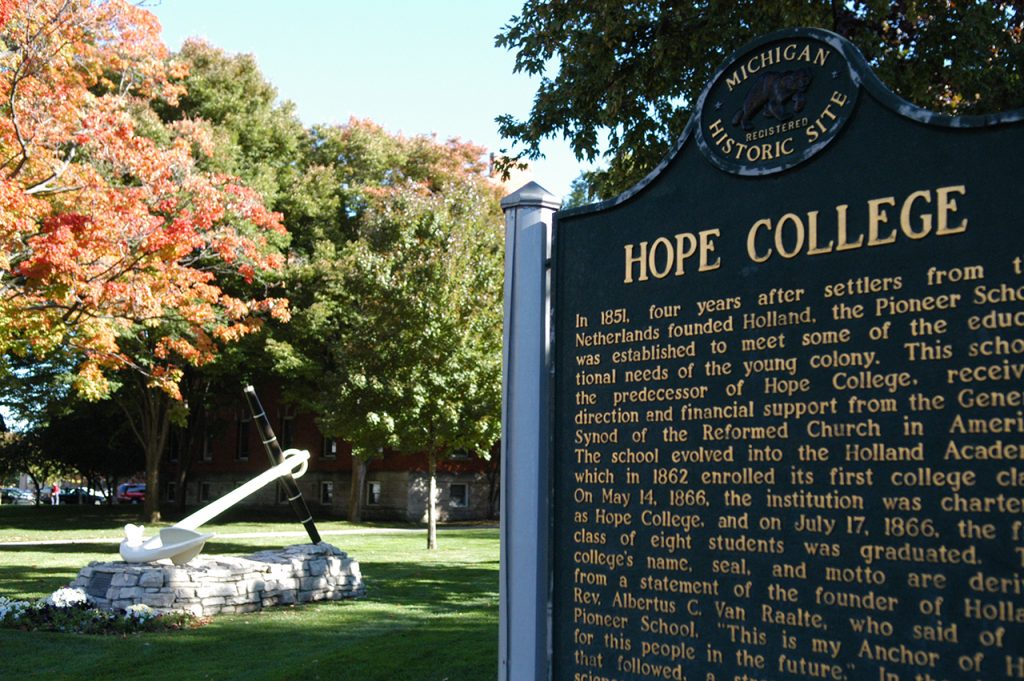
Greg Olgers ’87 is editor of News from Hope College and director of news media services at Hope. He has been writing about the college’s people, places and activities since joining the staff in October 1988.
It is a both rewarding and (for lack of a better word) strange experience, remaining at one’s alma mater some three decades after graduation.
I always think of generations at Hope lasting for four years, the time it takes for most of the student body to turn over completely. If that’s so, then I’m an artifact from an era long past, akin, perhaps, to having lived from the American Revolution to the present day. In any case, having graduated a decade before more than half of the college’s current students were even born, my frame of reference is clearly from an earlier epoch.
A Place Ever-Changing…
In some ways, particularly in terms of the physical plant, the college has changed immensely in that time. Where students “back in my day” talked of going to Peale or listened to the clatter of the photocopier from the open mezzanine of Van Zoeren Library, students today know the A. Paul Schaap Science Center (although they sometimes are still going to Peale, whether they realize it or not), and visit Van Zoeren as an office and classroom building. Long since, they’ve attended only a Hope graced with the Richard and Helen DeVos Fieldhouse and Martha Miller Center for Global Communication. For some, it already seems as if the Jack H. Miller Center for Musical Arts has always been there; Nykerk Hall, now replaced by the magnificent new Jim and Martie Bultman Student Center, lives on only in legend and in the memory of those who experienced it.

Then there’s student life. Completing term papers on a typewriter or (wonder of wonders!) the college’s Vax terminals? Now it’s laptops and wireless. Records and CDs? Now it’s iTunes and the like (unless in that I’m already out-of-date…). During my time as an undergraduate, every residence-hall room, cottage floor or apartment had a phone. By the time my son was a freshman in 2012, the college had removed the phones from the residence-hall rooms because students had their own. In the 1960s, Chapel was packed because it was mandatory. When I was at Hope it was less heavily attended (although very meaningful to those who went). Now it’s filled to standing-room-only by students who choose to be there. Yes, we had the Pull and Nykerk and Christmas Vespers, but Dance Marathon — itself legitimately a tradition at 18 annual installments and counting — wasn’t yet even a dream. When I was a student, downtown had a lot to offer but it wasn’t necessarily a mid-day destination. Today, students comfortably study and chat while enjoying multiple coffee shops’ sidewalk seating.
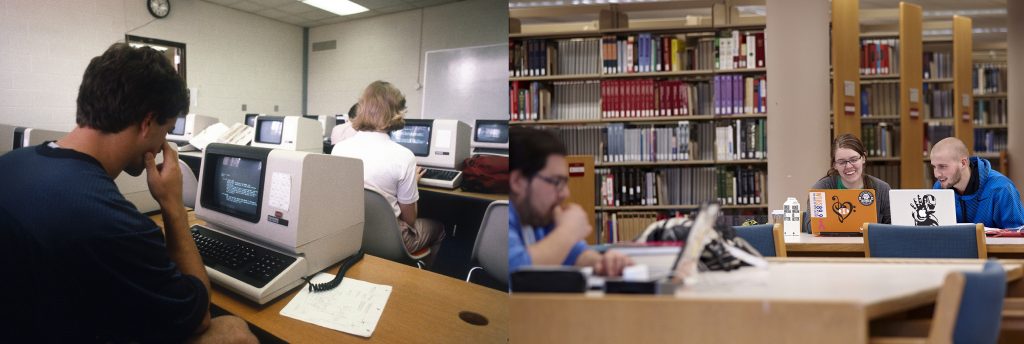
Ever-Changing, and Yet the Same…
So, that’s all part of the strangeness of hanging around like some sort of enduring sentinel, as the Hope of my undergraduate memory is ever morphing before my eyes. But, that transformation — and what doesn’t change — is also part of the wondrousness and the privilege in it, providing an opportunity to experience Hope as a continuum and to witness the on-going Hope story.
Sure, there have been tremendous changes in the past 30 years — and, indeed, in the past 151 — but the development of campus is what helps Hope serve new generations well (imagine if the Van Wylen Library, A. Paul Schaap Science Center or any number of other facilities had never been built). Of course as society, technology and the world change, students’ interests, experiences and needs reflect those changes, and Hope’s programs evolve to continue to best prepare the college’s graduates. In a way, the changes help enable Hope to be equivalent for new generations to what it was for those who attended before.
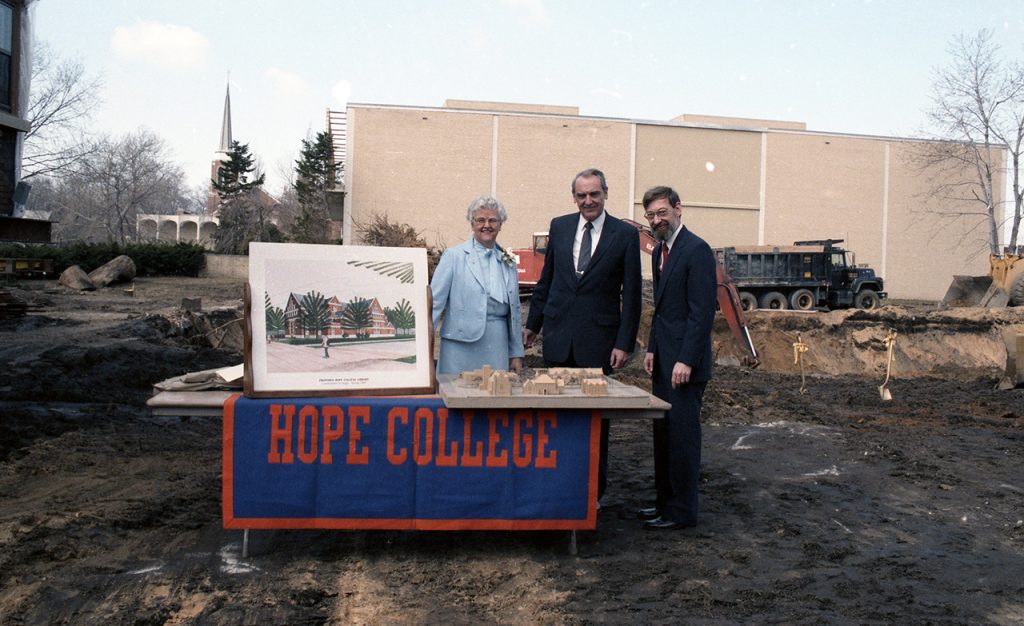
There’s also constancy. Some of that’s due to enduring landmarks that we all have in common, like the Pine Grove and Van Vleck and Voorhees halls, and the traditions that serve as mileposts for each of us across the academic year. Some of it is because Hope remains, ever, committed to educating “students for lives of leadership and service in a global society through academic and co-curricular programs of recognized excellence in the liberal arts and in the context of the historic Christian faith.” Especially, though, it’s owed to the people who make the place what it is — and not only because some of the faculty have been here 35 years or more. As I’ve spoken with current students and recent and longer-ago graduates, all praise the faculty and staff who clearly care about them and invest in them as individuals. It’s also because of the students, who in 2017 to me seem to possess some of the same qualities as their parents in 1983-87: serious about doing well, yes, but not in a cutthroat way; they’re supportive of one another at the same time, and concerned with more than self.

That ethos carries through year after year, perpetuating itself even as the faces and times change. There’s some self-selection involved in that, of course. So often through the years, students (and faculty and staff) have said something like this: “When I set foot on campus, I just knew. People I passed on the sidewalk said ‘Hello’ even though they didn’t know me.” Those who value an institution of higher education that combines academic excellence with a welcoming and supportive environment (which owes much to how Hope lives the Christian faith) tend to be drawn to the college. Crucially, those who are then in the Hope community preserve, model and inspire the character for those who follow.
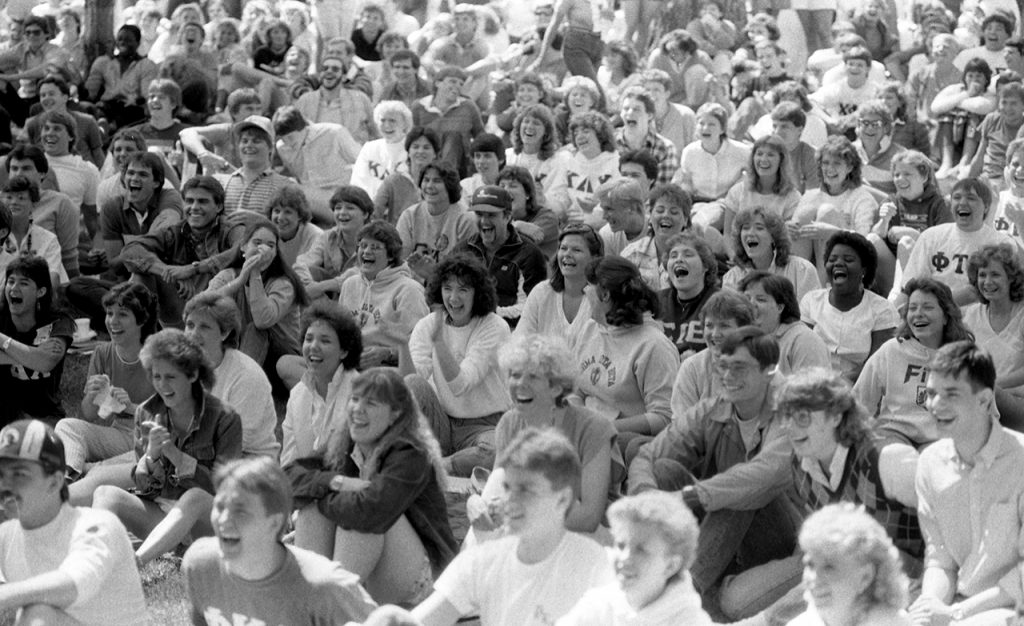
Time-Traveling…
And so, when I’m visiting Lubbers Hall and I see a faculty member and student sharing a laugh as they walk by, when I watch a professor in the Martha Miller Center for Global Communication patiently answer a question from a student who’s stopped in because the door was open, or when I overhear the students working outside my office offer to help each other in solving a problem or just bantering good naturedly, I experience echoes of the past.
And sometimes, when I’m sitting with of one of my former professors, wave while walking through the Pine Grove to a classmate who’s also on staff, or hear Phil Collins’ “In the Air Tonight” playing on the PA in Phelps Dining Hall, it doesn’t seem like it’s been all that long.
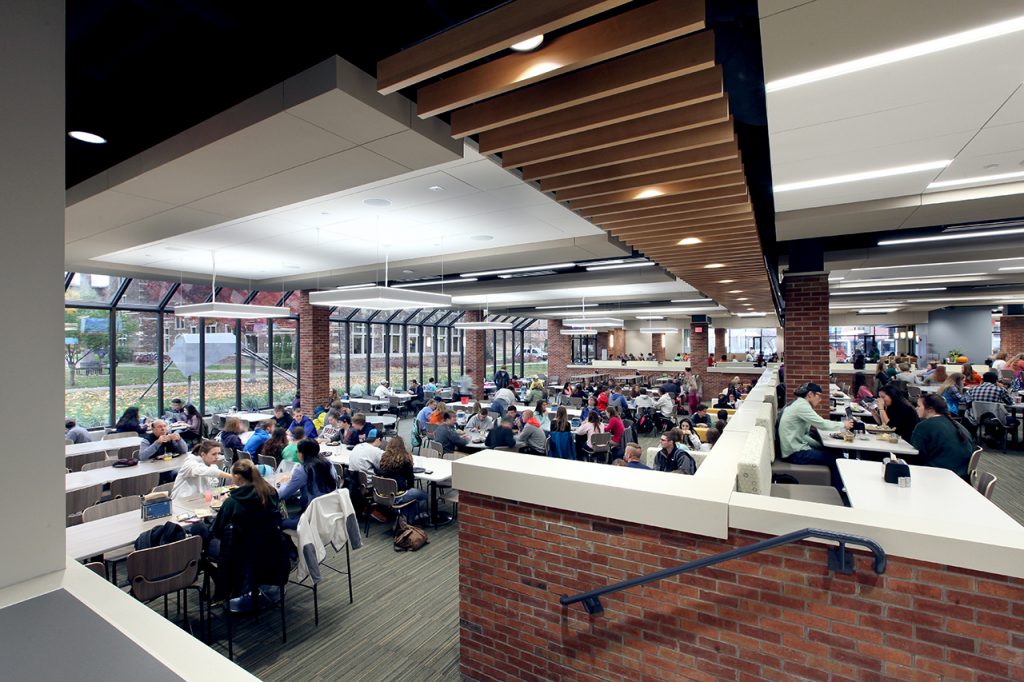


Nice post, Mr. Olgers. Out of curiosity, what existed in the place of Van Wylen Library prior to the groundbreaking in 1986?
Thanks for the note–and an excellent question! There were houses where the Van Wylen Library now stands. Rather than tear them down, Hope had (I think) three relocated to become student housing, although one played another role for a while first. It had been the college’s admissions office before the Bekkering Admissions House was built. Moved to 14th Street between College and Columbia, it next housed the Department of Nursing until the A. Paul Schaap Science Center was constructed, and today is Pieters Cottage. (1986 it wasn’t the last time that Hope recycled and reused rather than razed. Some years later, the college moved a number of houses to clear space for the Haworth Inn and Conference Center and Cook Residence Hall.)